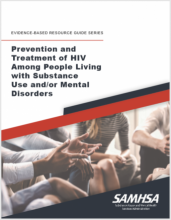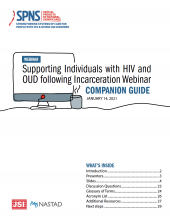
STAT News



This publication describes the recent trends of drug overdose deaths in the United States (U.S.) and the benefits of adopting harm reduction approaches.
This document provides a quick overview of the federal discretionary funding programs that support essential aspects of the nation’s HIV response.
In May, the New England AIDS Education Training Center (NEAETC) published a set of pages dedicated to providing information about and resources for HIV and HIV-related topics.
Clinicians can now access up-to-date evidence-based office-based addiction treatment recommendations for treating opioid use disorder (OUD) on a smartphone app.
Achieving the goals of the Ending the HIV Epidemic (EHE) Initiative depends on doing more to strengthen communities, reduce the harm associated with drug use, and prevent disease transmission.
Because of naloxone’s ability to reverse opioid overdose and its ease of use, by July 15, 2017, all 50 states and the District of Columbia had passed legislation to improve naloxone access, as one strategy to reduce opioid overdose morbidity and mortality.